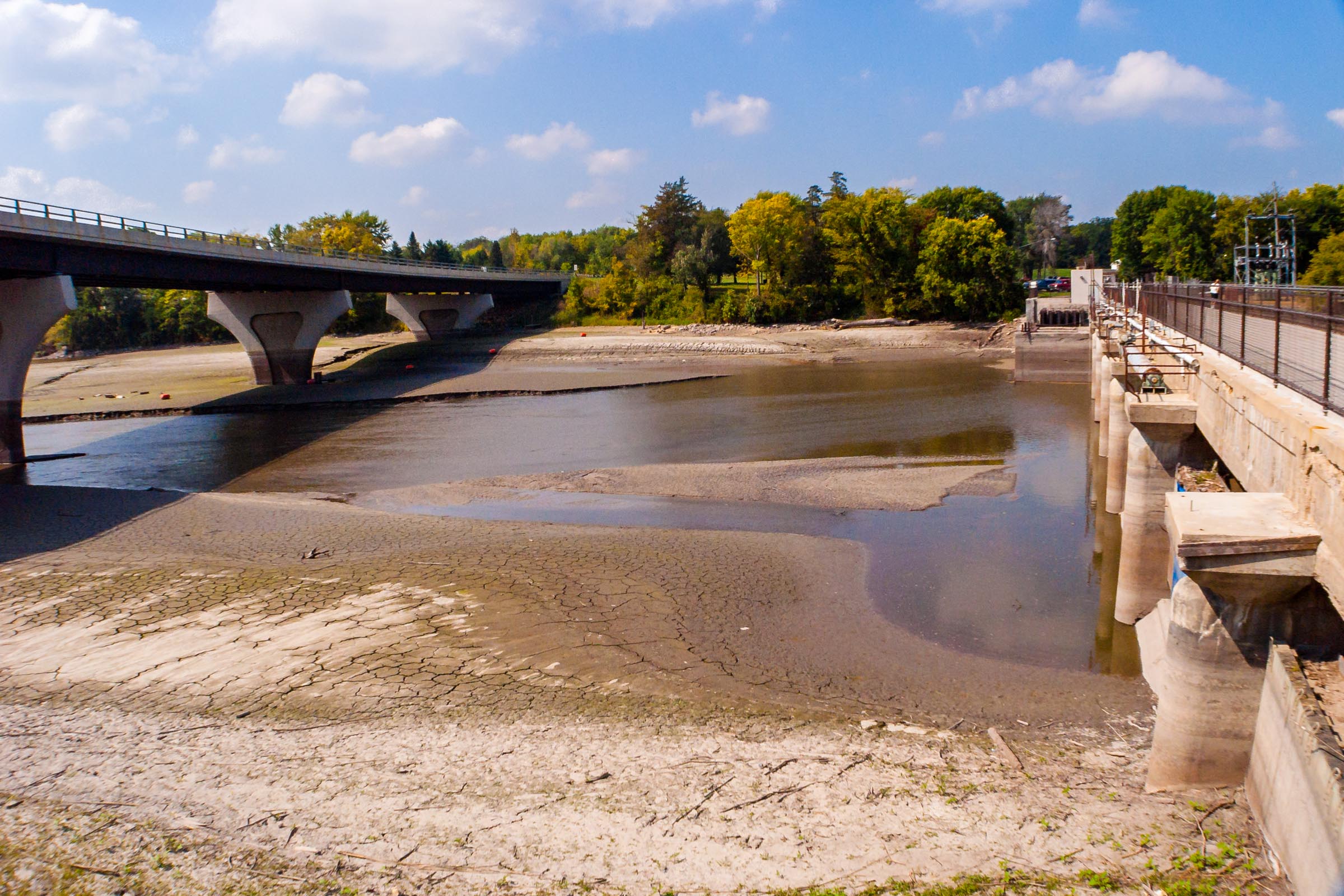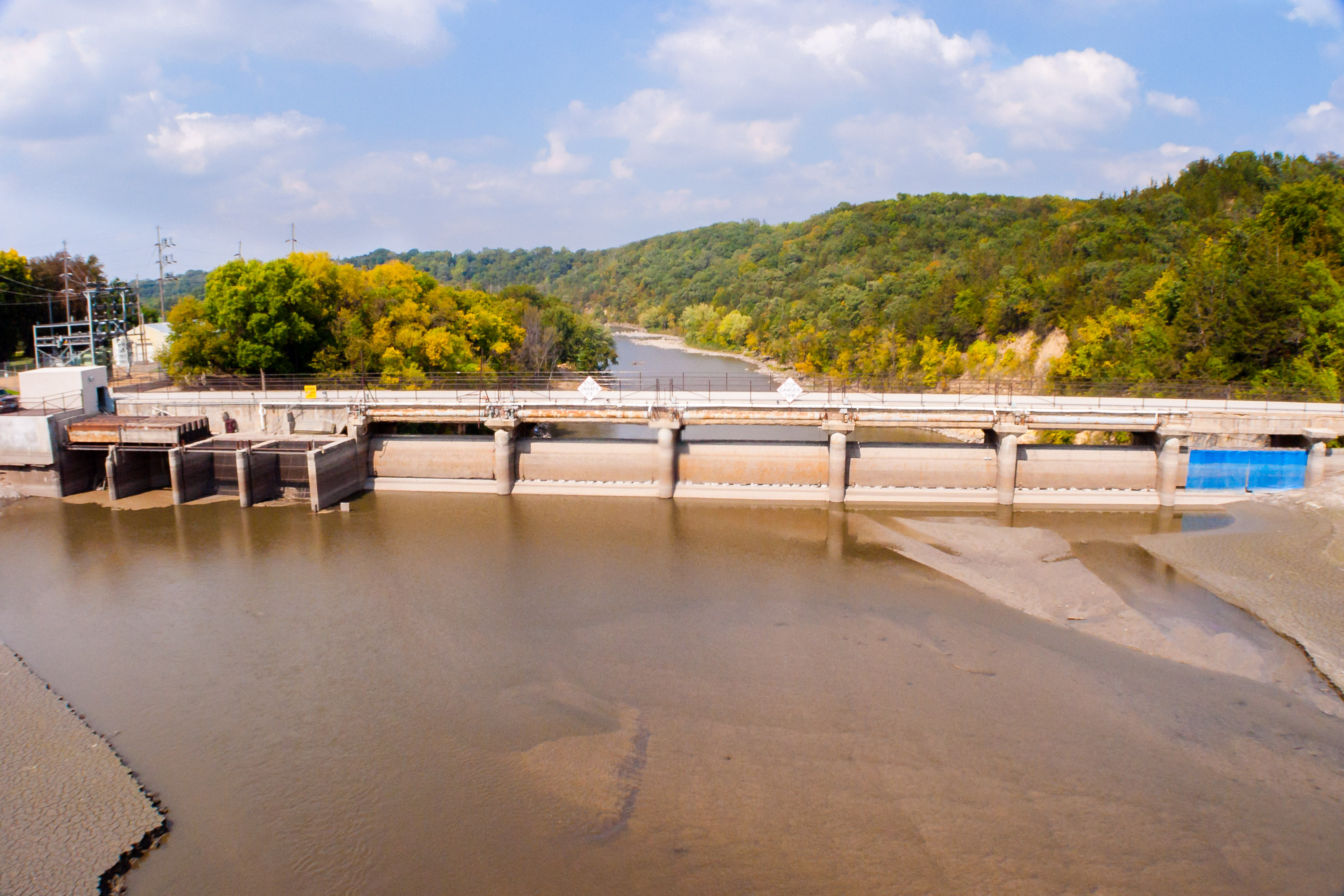Location and Description of Rapidan Dam

Rapidan dam location – Nestled amidst the rolling hills of central Virginia, the Rapidan Dam stands as a testament to human ingenuity and engineering prowess. Situated approximately 100 miles southwest of Washington, D.C., and 30 miles west of Fredericksburg, the dam plays a crucial role in providing water to the densely populated metropolitan areas of northern Virginia and beyond.
The Rapidan Dam is an impressive structure, stretching 1,800 feet in length and reaching a towering height of 105 feet. Its massive concrete body holds back the waters of the Rapidan River, creating a vast reservoir with a capacity of 320,000 acre-feet. This immense volume of water serves as a vital source of drinking water for millions of people in the region, as well as providing recreational opportunities and supporting the local ecosystem.
Physical Characteristics
- Length: 1,800 feet
- Height: 105 feet
- Reservoir Capacity: 320,000 acre-feet
- Construction Material: Concrete
- Purpose: Water supply, recreation, and ecosystem support
Purpose and Significance of Rapidan Dam

The Rapidan Dam stands as a testament to the ingenuity and foresight of early 20th-century engineers, serving a dual purpose of water management and flood control. Its construction in the early 1900s was a pivotal moment in the development of the region’s infrastructure, shaping the landscape and influencing the surrounding environment.
Primarily, the dam serves as a crucial component of the water supply system for the Washington, D.C. metropolitan area. Its massive reservoir impounds the waters of the Rapidan River, creating a dependable source of water for millions of residents. The dam regulates the flow of water, ensuring a consistent supply during periods of drought or increased demand.
Flood Control, Rapidan dam location
In addition to its role in water management, the Rapidan Dam also plays a vital role in flood control. The dam’s structure acts as a barrier, mitigating the impact of heavy rainfall and preventing downstream flooding. By controlling the release of water from the reservoir, the dam helps to reduce the risk of flooding in the surrounding areas, protecting communities and infrastructure.
Environmental Impact
The construction of the Rapidan Dam has had a significant impact on the surrounding environment and ecosystem. The creation of the reservoir has resulted in the inundation of natural habitats, leading to changes in the local flora and fauna. However, the dam has also created new habitats for aquatic species, contributing to the biodiversity of the region.
Design and Engineering of Rapidan Dam: Rapidan Dam Location

Rapidan Dam stands as a testament to innovative engineering solutions, boasting unique design features that have ensured its longevity and effectiveness. Its construction employed a meticulous selection of materials, each chosen for their specific properties and ability to withstand the demands of the environment.
The dam’s curved profile, a departure from traditional straight-axis designs, enhances its structural integrity by distributing water pressure more evenly across its surface. This curvature, coupled with the dam’s impressive height of 115 feet, creates a substantial reservoir capacity, capable of holding billions of gallons of water.
Materials and Construction
The dam’s construction utilized a combination of concrete and earthfill, each serving a distinct purpose. The concrete core, reinforced with steel, forms the dam’s impermeable barrier, preventing water seepage. The surrounding earthfill, composed of compacted soil and rock, provides additional support and stability to the structure.
The concrete used in Rapidan Dam’s construction was carefully formulated to possess high strength and durability. Its composition includes fly ash, a byproduct of coal combustion, which enhances the concrete’s resistance to chemical attack and reduces its permeability.
Challenges and Innovations
The construction of Rapidan Dam was not without its challenges. The site’s complex geology, characterized by fractured rock and unstable soil conditions, required innovative engineering solutions. To address these challenges, engineers employed a technique known as “foundation grouting,” which involved injecting a cement-based mixture into the bedrock to strengthen and stabilize the foundation.
The dam’s curved design also presented construction challenges. To ensure the precise curvature of the concrete core, engineers developed a specialized formwork system that allowed for the continuous pouring of concrete along the dam’s length.